
Parrot lifespan Do you want to know how long parrots live Maybe you would like to adopt one of these magnificent creatures and would like to know how long you are committing to it.
Perfect, because our experts have classified all the parrot species for you!
A parrot can live a very large number of years. Their life expectancy ranges from 10 years to 100 years for the rarest cases.
It is therefore essential to think carefully before welcoming one at home.
In this article, you will discover:
- The lifespan of parrots and also other birds
- Why do parrots live so long?
- How to determine their age
- How to increase the life expectancy of a parrot
The oldest parrot that ever lived
Parrot lifespan is 140 years: As you can see, parrots are long-lived birds. There are cases when they have far exceeded their average lifespan.
According to the Guinness Book of Records, the world record for the oldest parrot to note is that of Cookie, a Leadbeater cockatoo who died at the age of 83
Another contender for the throne is Duster, an umbrella-crested cockatoo who is currently recorded at the age of 89 and whose original age dates back to a time when he was featured in a local news segment.
Another famous parrot is the Tarbu, a private African Gray who lived until the age of 55.
There is also the New Zealand Kakapo parrot, which is a super rare species with only 150 individuals left in existence. The average life expectancy of these birds is 60 years but some individuals have been recorded as living up to 90 years.
Most parrots have a long lifespan, and while this is fantastic in itself, there are a few issues with their long lifespan:
Don’t expect kids to care for parrots on their own, They won’t be able to understand how serious the commitment to keeping parrots is.
There are certain species of parrots that can outlive their owners. So try to be realistic and choose a species that will live with you for most of its life. Or if you can’t, schedule a suitable new owner when the time comes.
Keep your budget in mind, as you will have to provide for your feathered friends for many years to come!
Meet Duster the 89-year-old Umbrella-Crested Cockatoo Parrot
What factors affect the lifespan of a parrot?
Some factors that affect the lifespan of a parrot are breed, environment, and socialization. The breed affects the life span of a parrot because the larger the bird, the longer it tends to live. Parrots also tend to live shorter in captivity than in the wild, much like most other animals.
In addition, a parrot that is not manipulated, spoken to, and mentally stimulated on a daily basis may begin to develop mental health problems; Neglected parrots are usually destructive both to their environment and to their bodies. Another factor that greatly determines the lifespan of a parrot is its feeding.
In general, large parrots have a longer lifespan than small parrots. Most parrots are a lifelong commitment for their owners, but some can last several generations of a human family, passed down from generation to generation. Some parrots, such as large macaws, can live for more than 100 years. In this way, parrots resemble turtles because their longevity frequently exceeds that of their owners. Bird lovers who want less commitment should consider adopting smaller parrot breeds, such as finches or parakeets.
Like many animals, a parrot’s lifespan is shortened when in captivity. Animals tend to fare better in their natural habitat, flying freely and eating plants they were supposed to eat. In the wild, a parrot can fly for miles in search of food or stimulation and eat fresh fruits and vegetables. They don’t always get as much exercise and healthy food in captivity.
Parrots can be very demanding of their owners, especially as they get older. Older parrots are generally smarter and more able to draw attention to themselves through good and bad habits.
Without constant interaction with humans or other birds, a parrot is not a healthy bird. Poor socialization can lead to self-harm or other mental health problems. Smart parrots are comparable to a three-year-old and can therefore wither without healthy interaction.
Poor nutrition can shorten a parrot’s lifespan, just as it can shorten a human’s lifespan. Parrots are also at risk for heart attacks and other fatal health problems when their diet is poor. The situation is aggravated by the fact that many parrot owners do not know the proper food for feeding their parrots or occasionally give them leftovers of human food. A veterinarian can help determine the best parrot diet.
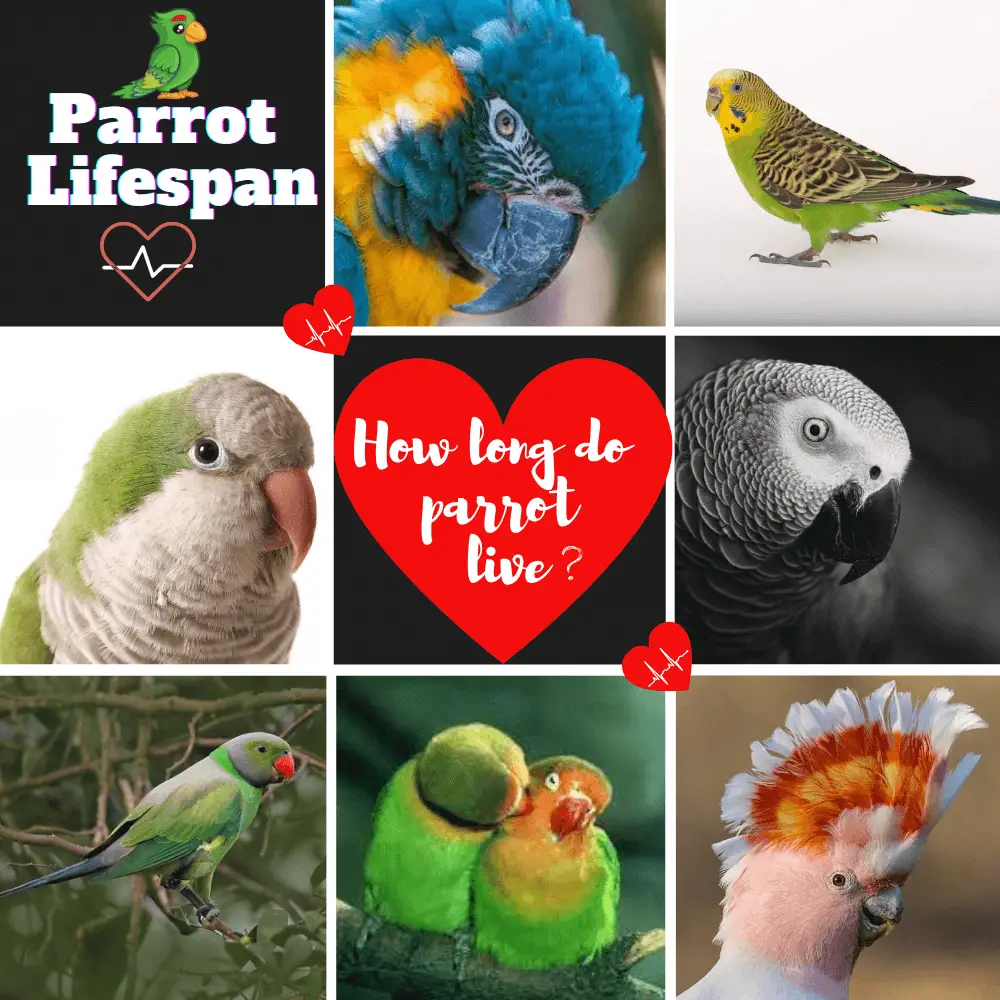
Average Lifespan of Parrots
Let’s take a look at some of the most popular parrot species that you are likely to come across. life expectancy is related to size, with larger parrots living longer than their smaller cousins.
| Species | Lifetime | Scientific name |
| pineapple conure | 10 to 15 years | Pyrrhura molinae |
| Lineolated parakeet | 10 to 15 years | Bolborhynchus lineola |
| Green cheek conure | 10 to 15 years | Pyrrhura molinae |
| Black Masked Lovebird | 10 to 20 years | Agapornis personatus |
| Cockatiel | 10 to 20 years | Nymphicus hollandicus |
| Cockatiel (lutino) | 10 to 20 years | Nymphicus hollandicus |
| Pacific Toui | 10 years | Forpus coelestis |
| Toui | 10 years | Forpus |
| Red-rumped parakeet | 12 years | Psephotus haematonotus |
| Fischer’s Lovebird | 13 years | Agapornis fischeri |
| Bourke’s parakeet | 13 years | Neopsephotus bourkii |
| Pionus maximilian (red head) | 15 to 20 years | Pionus maximiliani |
| English parakeet | 15 to 21 years old | Melopsittacus undulatus |
| Budgerigar | 15 to 21years | Melopsittacus undulatus |
| Peach-faced Lovebird | 15 to 25 years | Agapornis roseicollis |
| mustache parakeet | 20 to 25 years | Psittacula alexandri |
| noble macaw | 20 to 25 years | Diopsittaca nobilis |
| Quaker Parrot (Monk Parakeet) | 20 to 25 years | Myiopsitta monachus |
| blue-headed pionus | 20 to 30 years | Pionus menstruus |
| red fan parrot | 20 to 30 years | Deroptyus accipitrinus |
| sun conure | 20 to 30 years | Aratinga solstitialis |
| Nanday Parakeet | 20 years | Aratinga nenday |
| Rainbow lorikeet | 20 years | Trichoglossus moluccanus |
| Jandaya Conure | 20 years | Aratinga jandaya |
| Swainson’s Lorikeet | 20 years | Trichoglossus moluccanus |
| Canary | 24 years | Serinus canaria forma domestica |
| Meyer’s Parrot | 25 to 30 years | Poicephalus meyeri |
| Alexandrine Parakeet | 25 to 30 years | Psittacula eupatria |
| Indian ring-necked parakeet | 25 to 35 years | Psittacula krameri |
| dark pionus | 25 years | Pionus fuscus |
| black-headed caique | 25 years | Pionites melanocephalus |
| white-bellied caique | 25 years | Pionites leucogaster |
| white-headed pionus | 25 years | Pionus seniloides |
| Lilac Crowned Amazon | 25 years | Amazona finschi |
| Goffin cockatoo | 26 years | Cacatua goffiniana |
| blue and gold macaw | 30 to 35 years | Ara ararauna |
| Spix’s Macaw | 30 to 35 years | Cyanopsitta spixii |
| Orange Winged Amazon | 30 years | Amazona amazonica |
| Red-lored Amazon | 30 years | Amazona autumnalis |
| Eclectus | 30 years | Eclectus roratus |
| Great Eclectus | 30 years | Eclectus roratus vosmaeri |
| Severe macaw (green) | 30 years | Ara severus |
| Eclectus des îles Salomon | 30 years | Eclectus roratus solomonensis |
| Blue Solomon Islands eclectus | 30 years | Eclectus roratus solomonensis |
| hyacinth macaw | 40 to 50 years | Anodorhynchus hyacinthinus |
| Scarlet macaw (red) | 40 to 60 years | Ara macao |
| Cockatoos | 40 to 60 years | Probosciger aterrimus |
| Congo African Gray | 40 to 60 years | Psittacus erithacus |
| Leadbeater’s Cockatoo | 40 to 60 years | Lophochroa leadbeateri |
| Timneh African Gray | 40 to 60 years | Psittacus timneh |
| umbrella cockatoo | 40 years | Cacatua alba |
| Macaw Catalina | 40 years | Ara |
| Galah Cockatoo | 40 years | Eolophus roseicapilla |
| youyou parrot | 40 years | Poicephalus senegalus |
| Military Macaw | 45 to 60 years | Ara militaris |
| zebra finch | 5 to 7 years | Taeniopygia guttata |
| Yellow Double-headed Parrot | 50 to 60 years | oratrice Amazona |
| Blue-fronted Parrot | 50 to 60 years | aestiva Amazona |
| Green-winged macaw | 50 to 60 years | Ara chloroptère |
| yellow-naped amazon | 50 years | Amazona auropalliata |
| Harlequin Macaw | 50 years | Ara |
| Gouldian finch | 6 years | Erythrura gouldiae |
| Sulphur-crested Cockatoo | 60 years | Cacatua galerita |
| Red-crested Cockatoo | 60 years | Cacatua moluccensis |
Note sur les données recueillies : De grandes différences ont souvent été constatées dans les tranches d’âge de ces sources scientifiques. Lorsque cela s’est produit, nous avons essayé de trouver la meilleure moyenne citée. Les différences sont probablement dues au fait qu’il y a tant d’espèces de perroquets qui vivent si longtemps que la tenue de registres devient difficile à suivre pour les propriétaires. Vous avez relevé des inexactitudes ? Vous pouvez nous le faire savoir en commentaire ou par mail.
African grey parrot

The smartest parrots, these parrots can live 45 to 68 years, with slight variations between the more common Congo African Grey and the lesser-known African Grey subspecies Timneh.
Amazon parrot

This family of birds includes a large number of subspecies and has an age range of 30 to 60 years. They are quite common and can be found in Central America, South America, and the Caribbean islands.
Caique parrot
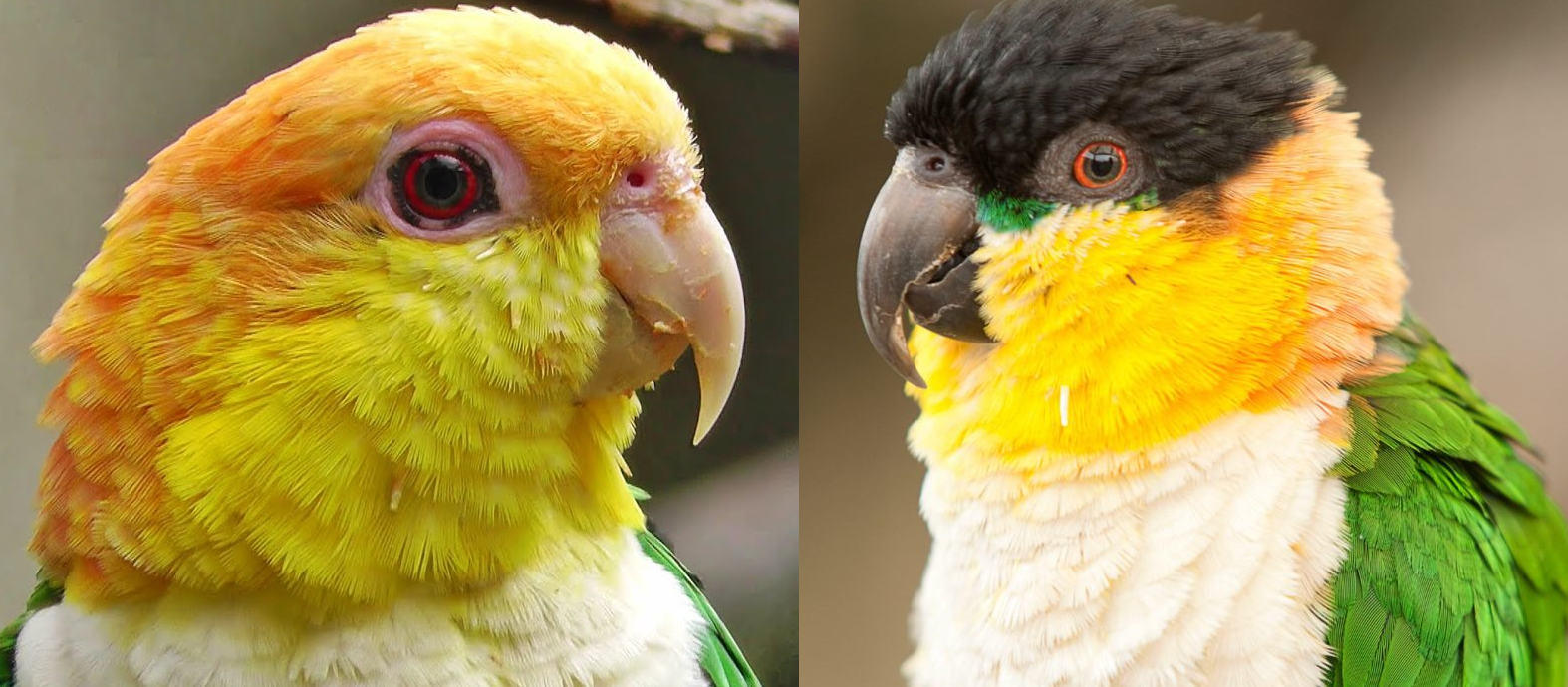
These loud and playful birds, such as the Black-headed Caique and the White-bellied Caique, have a lifespan of around 25 years.
Cockatiel parrot
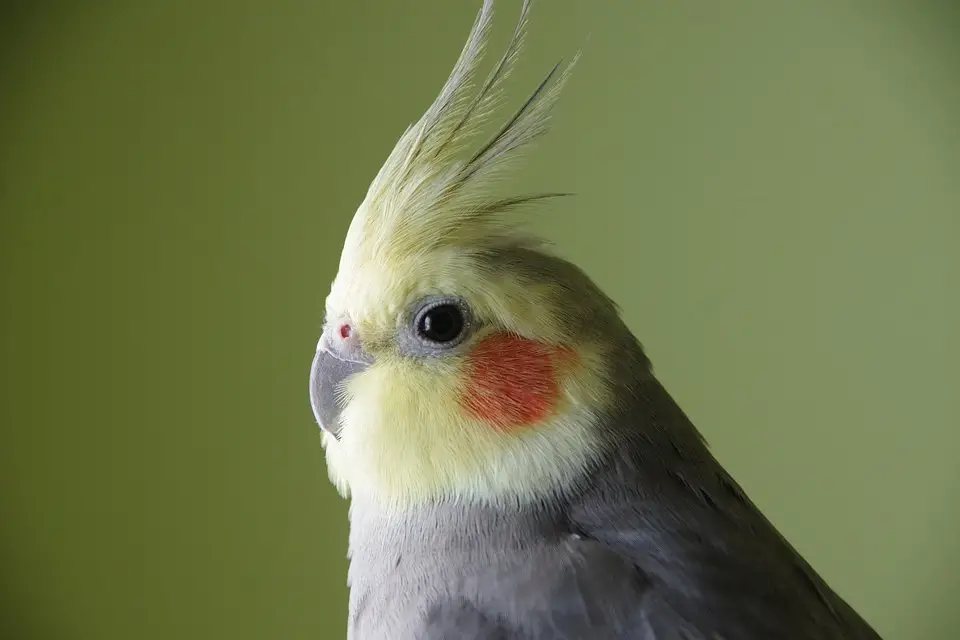
These friendly, playful, and popular bird species can live 10 to 20 years. They are sociable and should be paired with another bird or have plenty of socializing time with you each day.
Cockatoo parrot
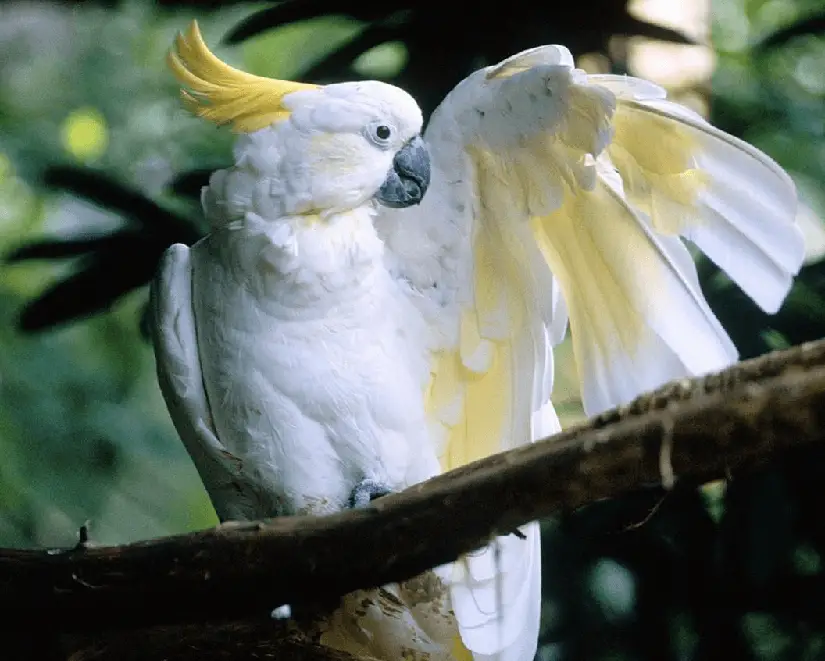
Cockatoos are a large family of birds that have a long life and are native to Southeast Asia and Australia. On average, you can expect your cockatoo to live 40 to 60 years old.
Umbrella cockatoo
These distinctive white birds feature a bright yellow head feather. They can be very loud and will be part of your family for about 40 years.
Conure parrot
The average life expectancy of conures can vary from 10 to 30 years. They have relatively long tails and require a lot of attention. Their natural habitat is found in the Western Hemisphere, particularly in South America.
Green-cheeked conure
A cute, easy to care for, and fairly calm pet bird that makes a good bird for beginners. They live an average of 15 to 20 years.
January conure
Small but noisy pet birds that are intelligent and can live for an average of 20 years.
Nanday conure
Nanday conures live on average to 20 years and look slightly different from other types of conures as they are larger and have a dark-colored head.
Pineapple conure
It is just a color variation created by the reproduction of the Molina’s conure species and therefore it has the same life expectancy of 10 to 15 years.
Sun conure
They are noisy companion birds but also very popular due to their bright yellow plumage. They typically live 20 to 30 years.
Eclectus parrot
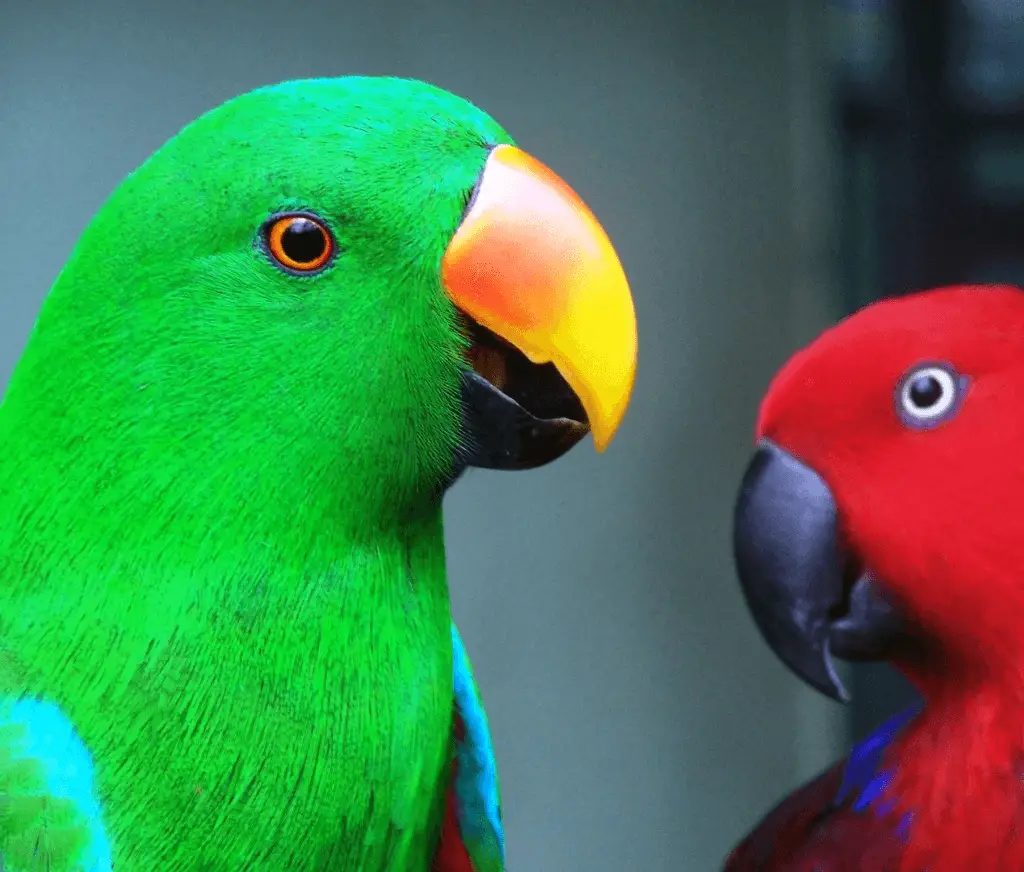
This medium-sized, beautifully feathered parrot has 3 subspecies that are commonly kept as pets and all of which can live for over 20 to 30 years. The males and females of these species are very different from each other.
Falcon-headed parrot
The Red Fan Parrot, these parrots come with a set of striking head feathers that they can glue on to display their emotions. They live for 25 to 30 years.
Ringneck parrot

These highly active and adaptable birds have become very common in wild parrot populations around the world. They are likely to live 25 to 35 years.
Lorikeet parrot
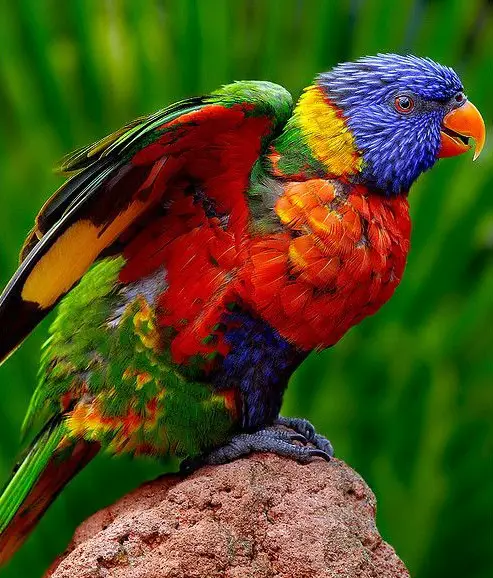
These beautiful species of rainbow lorikeets live for around 20 years and are unique among parrots for their nectar-based diet. They are commonly found in Australia.
Lovebirds
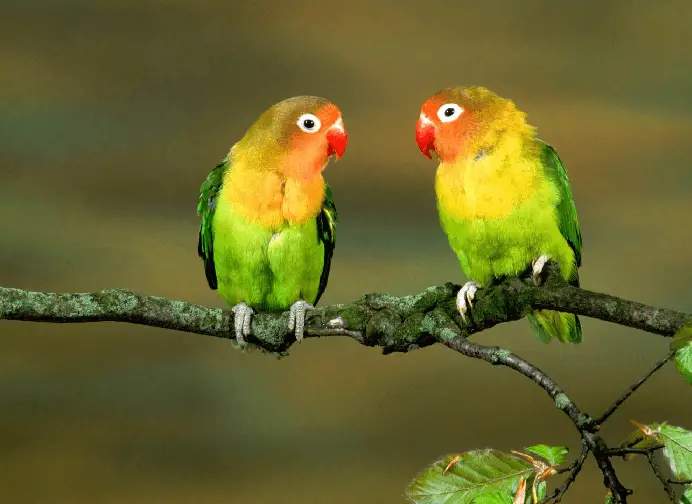
Known to form strong mating bonds with each other, lovebirds can live 10 to 25 years, depending on the subspecies. Originally from Africa, they have friendly behavior but also make a lot of noise.
Fischer’s Lovebirds
Very curious bird, a friendly parrot, and with a lot of energy. These birds are expected to live for about 13 years and are very popular as pet birds.
Peach-faced Lovebird
Known to be friendly, these very popular parrot species are also called the pink-faced lover and have a lifespan of 15 to 25 years.
Macaw parrot
Macaws are a group of parrots that exhibit the main distinguishing features of long tail feathers, large beaks, and often bare, white-featherless faces. The lifespan of different species of macaws varies from 20 to 60 years.
Great macaw parrot
Large macaws tend to live on average much longer than smaller versions of macaws, with the lifespan of large macaws ranging from 30 to 60 years. It is not uncommon for large, well-groomed macaws to live over 60 years.
Blue and yellow macaw parrot
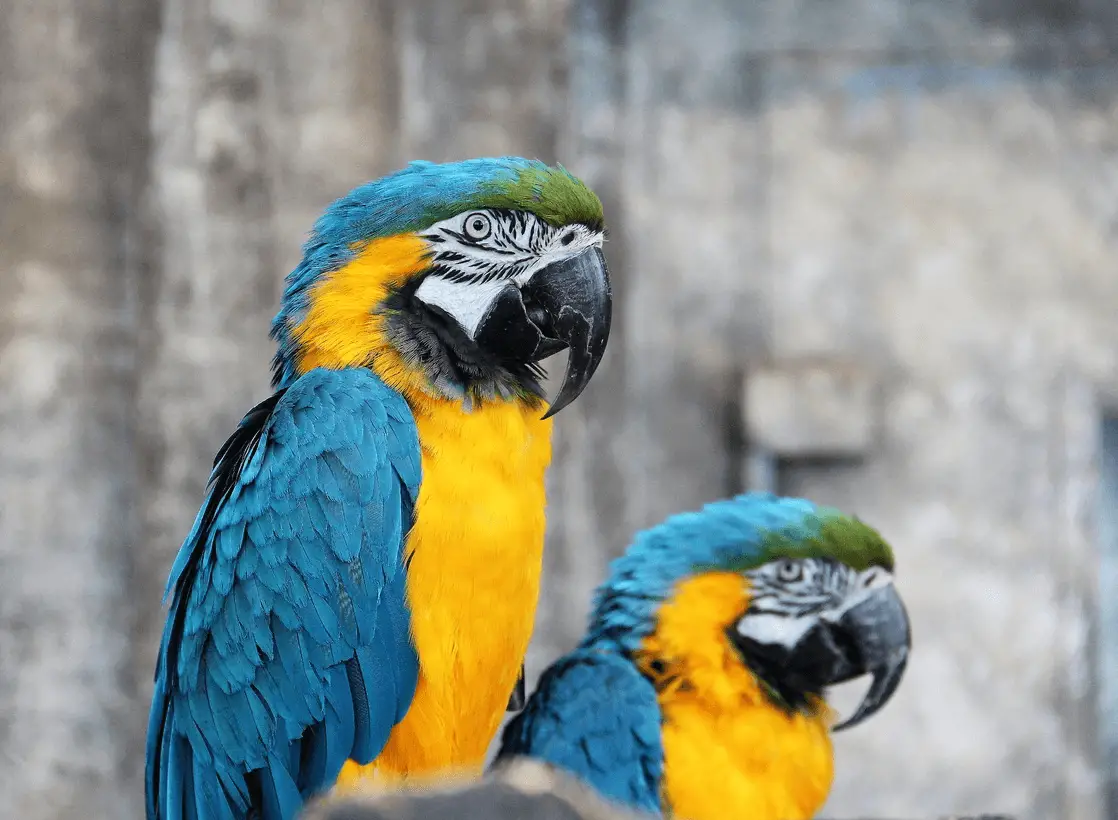
This bird is known for its strong vocalizations and its ability to mimic human speech, as well as for its beautiful plumage. The life expectancy is 30 to 35 years.
Green-winged macaw parrot
It is a bird that is covered with red feathers, except for its wings which are covered with green and blue feathers. This is what gives the bird its other name, the red and green macaw. You can expect a green macaw to be around 50 to 60 years old.
Hyacinth macaw parrot
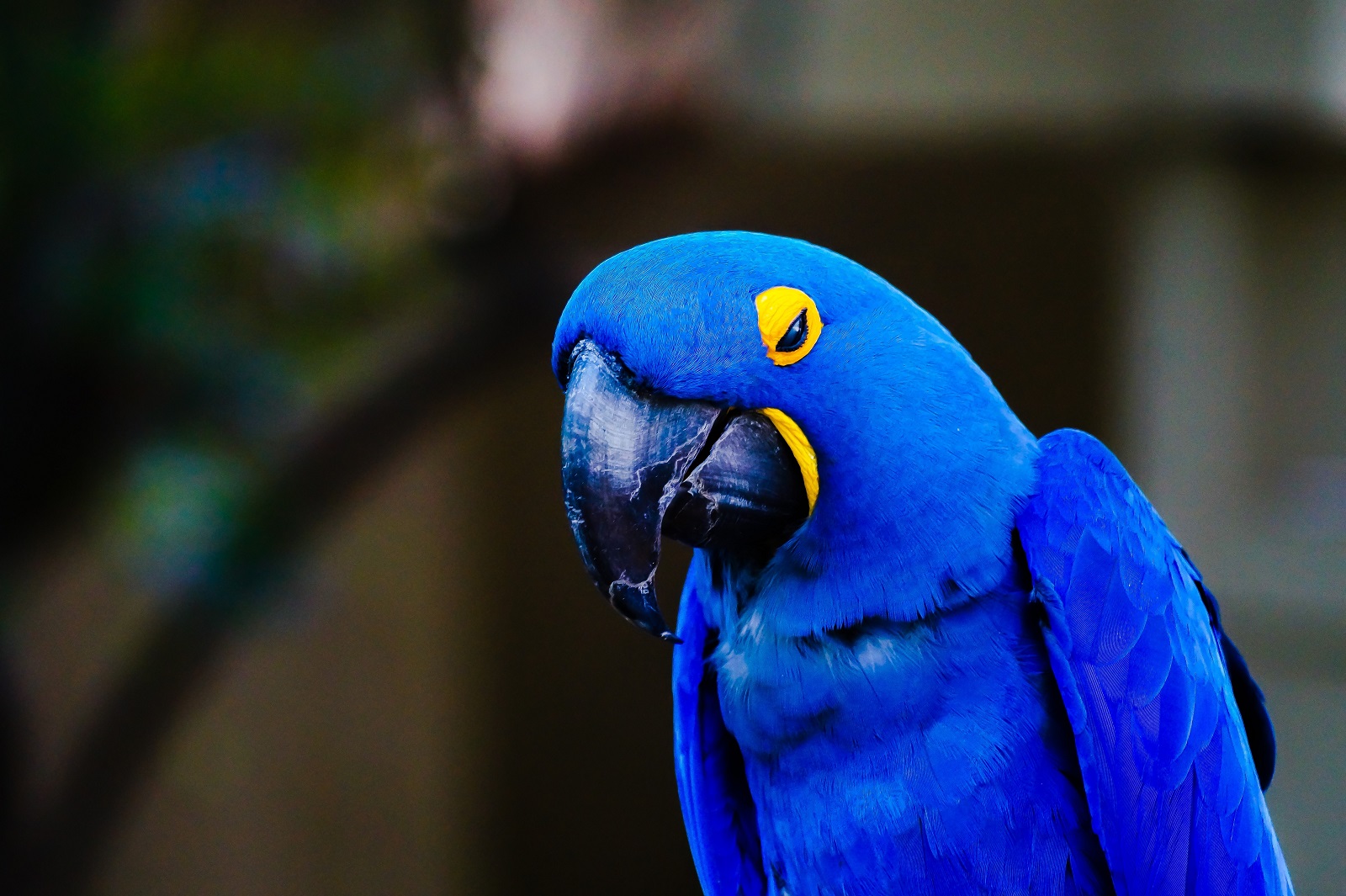
The largest of all parrot species, this bird with beautiful dark blue plumage is quite rare and expensive to own. You can expect a Hyacinth Macaw to live for 40 to 50 years.
Hybrid macaw parrot
Closely related macaw species can breed with each other to form a hybrid macaw species. It will share the characteristics of the two species of birds.
This makes their lifespan a bit more variable, but on average they are likely to live 40 to 50 years. Two-hybrid macaws are listed below:
Catalina macaw parrot
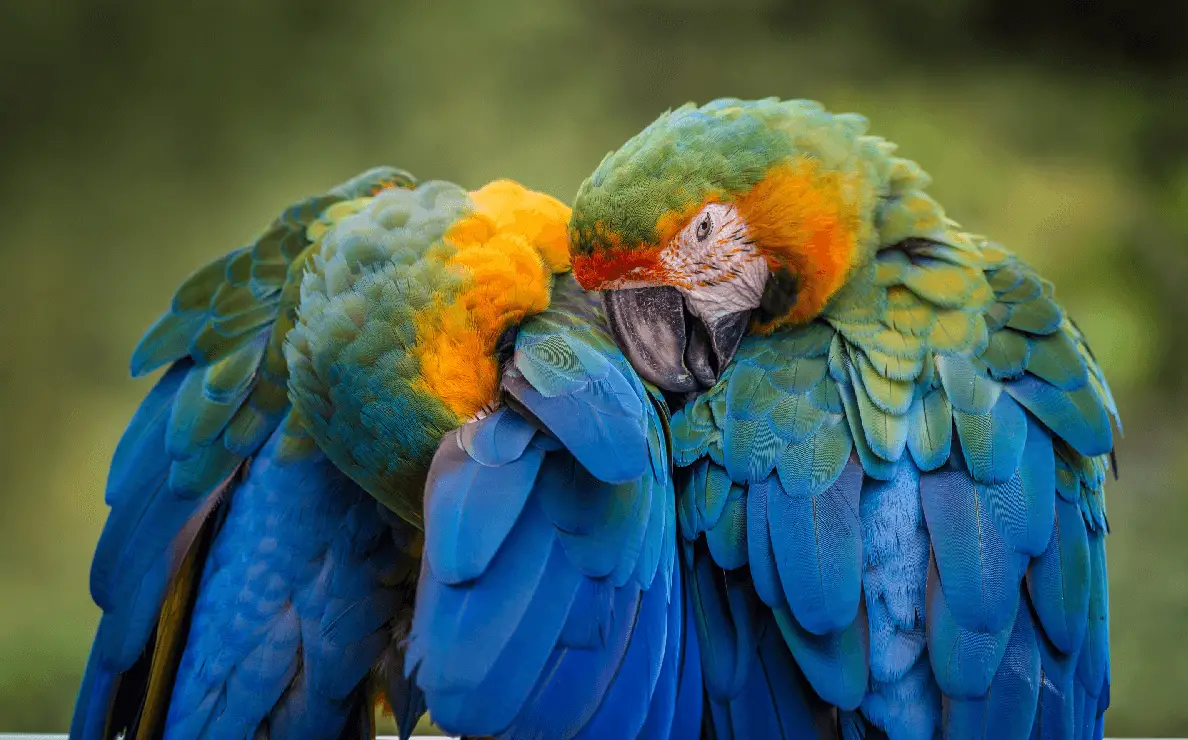
This hybrid is created when a scarlet macaw is mated with a blue and yellow macaw. A Catalina macaw will have a lifespan of approximately 40 years.
Harlequin macaw parrot
A very common hybrid among macaw crosses, a Harlequin Macaw is obtained when green-winged macaws are mated with blue and yellow macaws. The lifespan of a Harlequin Macaw is approximately 50 years.
Military Macaw parrot
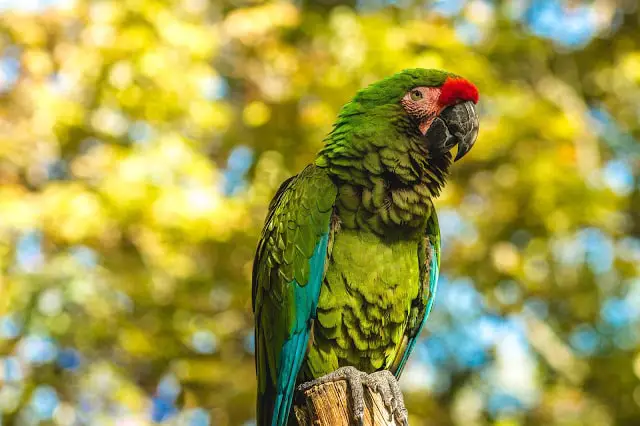
The feathers of this bird resemble those of a green military uniform, hence its name. A military macaw probably lives 45 to 60 years old.
Mini macaw parrot
A classification for a group of smaller-sized macaw species, which are less than 50 cm in height. They tend to live 20 to 30 years.
Green macaw parrot
It has a very long tail feather as one of its most prominent features. The macaw is also called the brown-fronted macaw. On average, this macaw lives 30 years.
Hahn’s macaw parrot
A cute and sweet species of bird that features green plumage over most of its body except for its shoulder where there is a patch of red feathers, which gives it the other name of macaw in red epaulets. The lifespan of a Hahn’s macaw is 20 to 25 years.
Scarlet macaw parrot

A very recognizable bird that is popular within the poultry community thanks to the beautiful red, yellow, and blue plumage that these birds have. You can expect a scarlet macaw to be alive with you from 40 to 60 years old.
Spix’s macaw parrot

Now possibly extinct in the wild, and with only a few hundred birds left in captivity in the world. Spix’s spider is likely to live 30 to 35 years!
Meyers parrot
Commonly found in Africa and a relatively calm species of parrot, these parrots live 25 to 30 years.
Alexandrie parrot
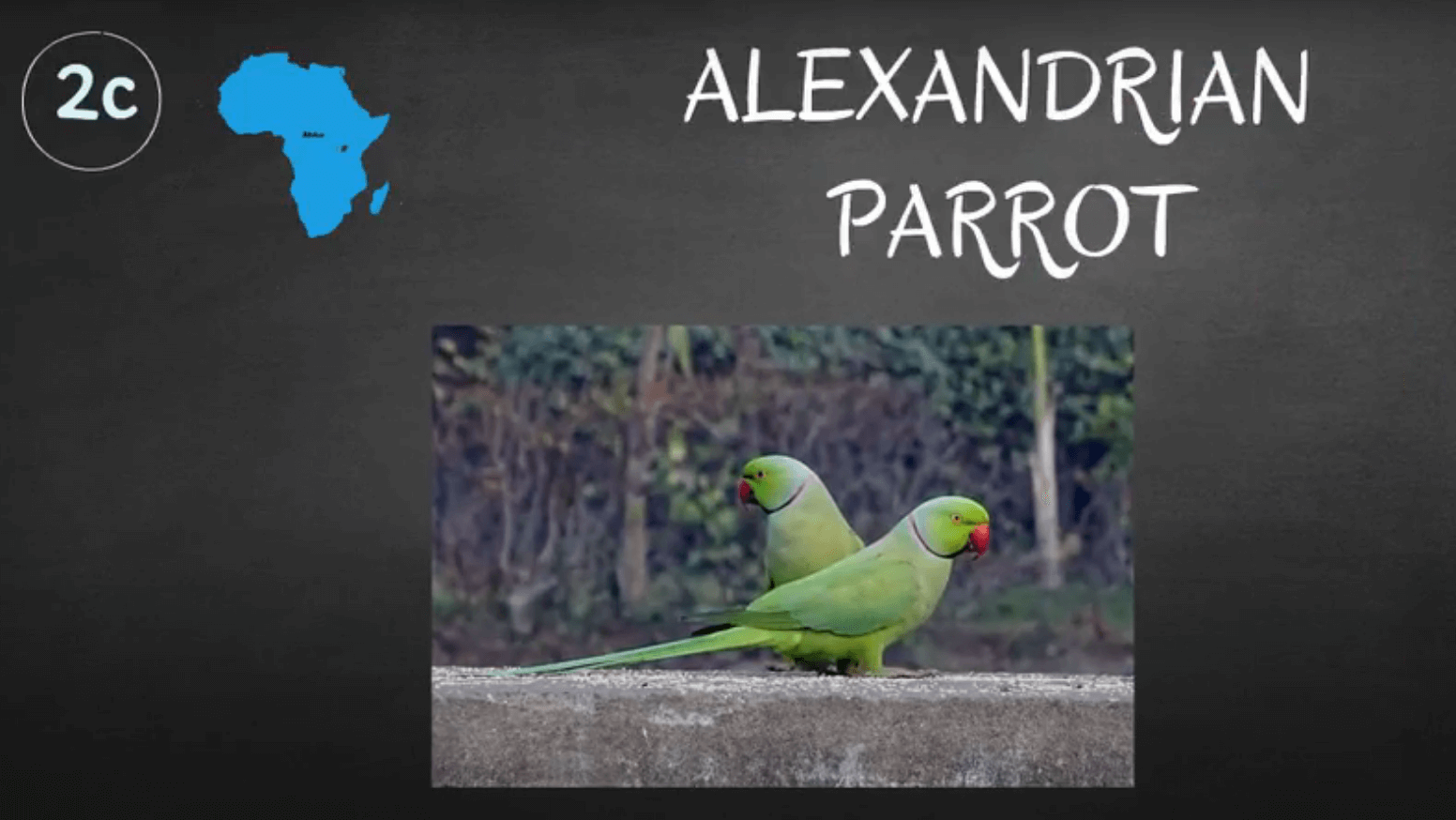
These birds live longer than the normal parakeet, and one can be expected to live 25 to 30 years. Named after the historic conqueror “Alexander the Great”.
Bourke’s parakeet
These birds don’t have as much energy as other parakeets, which makes them more suitable for families with children. They come from Australia and their lifespan is about 13 years.
Parakeet
Parakeets are a very broad category of birds that covers a range of different species. They can usually be identified by their long tail feathers and medium size. Their lifespan varies from about 15 to 30 years, depending on the species of parakeet.
Linear parakeets
These social and friendly creatures are also called “Linnies” and have a lifespan of 10 to 15 years. They come from Central America and the northern part of South America.
Mustache parakeets
A fairly rare species of bird, native to Southeast Asia, which has striking breast feathers. They are likely to live 20 to 25 years.
Red-rumped parakeet
You can find these birds in South East Australia and they have unique emerald and red color of feathers. Their lifespan is approximately 12 years.
Touï parrots
They are very small and pretty New World parrot species that have a big personality in a small body. Their life expectancy is quite short for a bird, around 10 years.
Pionus parrot
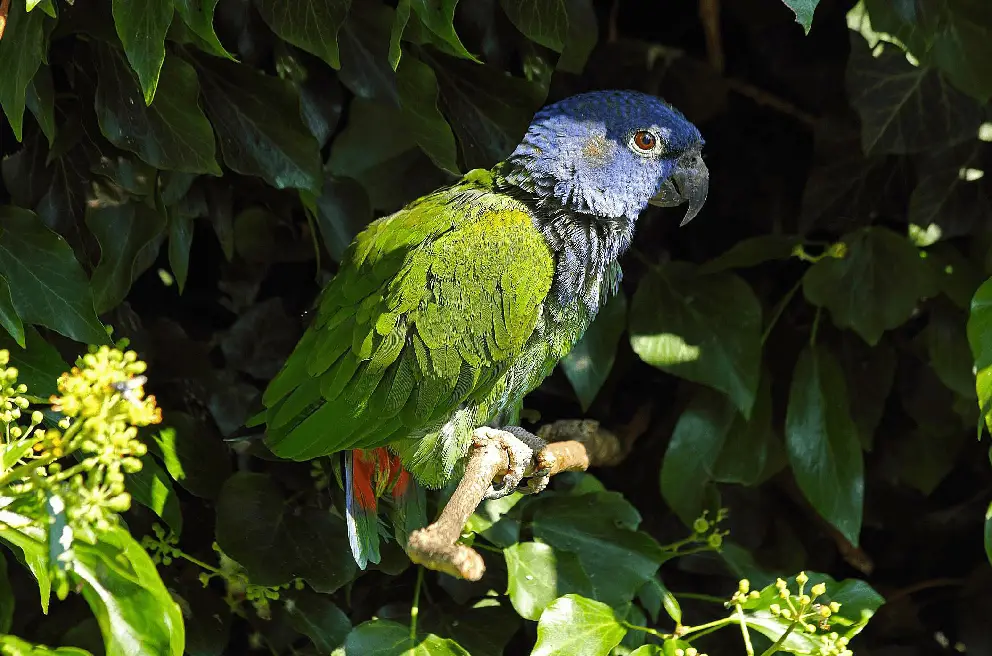
Affectionate but not overly energetic, these birds can make good pets for people with children and are likely to live 15 to 25 years.
Quaker parrot
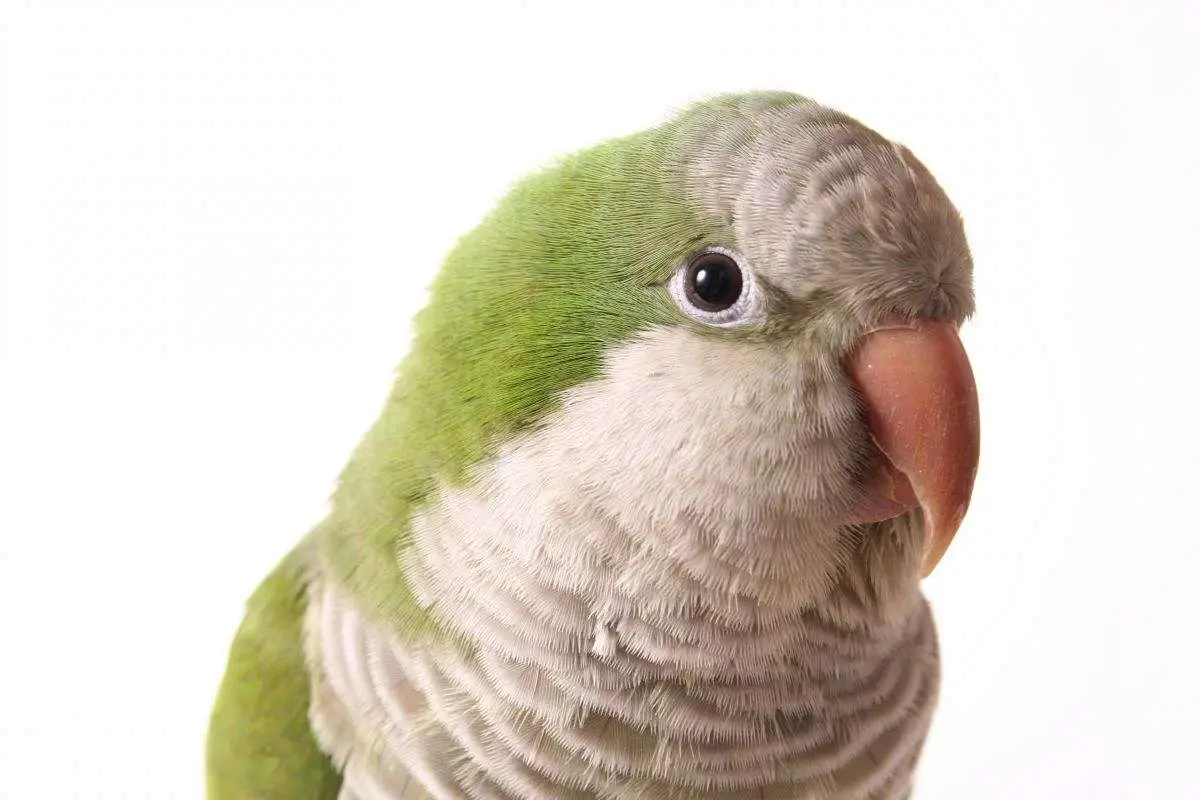
Known for their shivering or “shaking” behavior, these birds are very friendly and come in a variety of colors. They are likely to live 20 to 25 years.
Senegal parrot

Native to the west coast of Africa and the Poicephalus bird family, the Senegal parrot has a life expectancy of 40 years.
How Long Do Parrots and Other Birds Live?
Parrots tend to live much longer than other animals of similar size.
This is not only true for parrots but in general, any animal that flies tends to live longer than an animal that does not fly. This is in part because flying provides a lot of exercises. Exercise is well known to increase the longevity of most animals.
Parrots also have a relative lack of predators compared to other animals as they can fly away, making them relatively safe. In addition, many species of parrots live in groups to ensure an even higher level of safety.
A longer lifespan means they can reach sexual maturity at a later stage in their life. So reproduction at a later stage allows parrots to avoid transmitting genetic imperfections that will shorten their lifespan.
Birds also have lower levels of oxidative damage which prevents the corruption of their DNA. Over a lifetime, this low level of damage allows them to live longer and reduces the number of diseases.
How to Determine the Age of a Parrot?
If you don’t know your bird’s age, the best way to find out is to contact the previous breeder or owner. They usually have some type of documentation or record of the age of the bird.
The leg bands parrot will provide additional information on who to contact and possibly the age of the bird.
If both of these ways fail, then you can make some simple observations that will help you assess the age of the bird :
- Level of physical activity: Young parrots tend to be much more active and aggressive than older parrots.
- Plumage: Older exotic birds lose the liveliness and color of their plumage as they age.
- The quality of the beak: it tends to become duller and change color.
- Eye color: may change and become lighter, more faded, or grayer.
- Health Concerns of older parrots *
* Although parrots live long lives, they still develop a number of health problems as they age. You should keep an eye out for these common signs in older birds:
- Arthritis: This can weaken a parrot’s legs and prevent it from gripping its perch as strongly. Special flatter or wider perches may be needed to help them rest.
That’s why we offer you our very useful perches to fight arthritis.
Discover our collection of parrot perches by clicking on the image below.
- Cataracts: Can be tested by a vet and will cause your birds’ sight to gradually worsen over time. The signs include your birds bumping into objects and not observing the objects around them as they normally would.
- Less activity: Aging parrots exercise less, so their diet may need to be adjusted as they get older, otherwise it can lead to obesity in birds.
- Tumors and lumps: Gently examine your bird for any unusual bumps or lumps. This will help you identify the presence of any potential cancer or other problems.
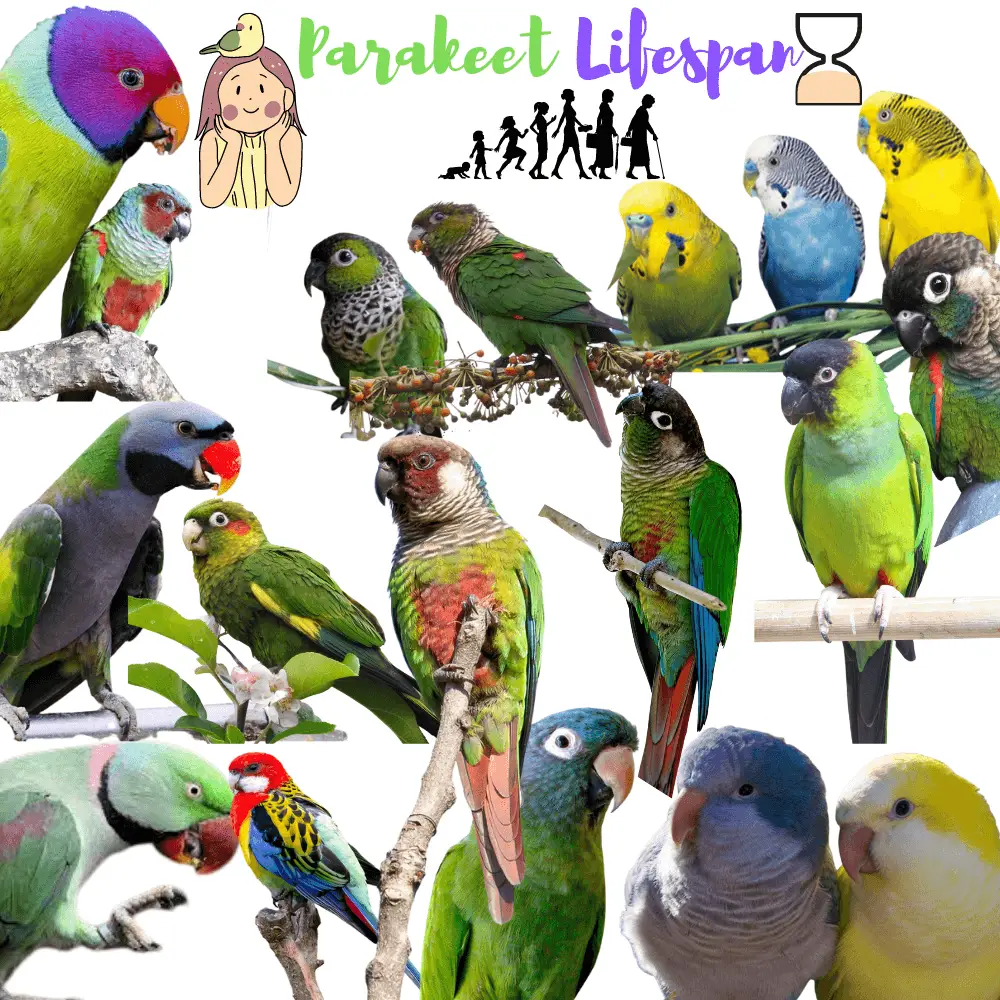
How to Increase the Lifespan of a Pet Parrot?
How you take care of your parrot can have a big impact on its quality of life and lifespan. Below are a number of things you can do to increase the health and longevity of your exotic birds:
- Diet and Nutrition: This will have one of the biggest impacts on parrot’s lifespan. Vitamin A, D, and calcium deficiencies are common in birds following a seed-based diet.
- Care should be taken to provide your parrot with high quality and balanced selection of foods. This diet should include fortified granules combined with appropriate fresh fruits and vegetables, and vitamins and supplements are recommended.
- Full Spectrum Lighting: Indoor birds will need a full spectrum light source that is not provided by normal bulbs. The ideal being at least eight hours a day. Without it, your bird may be prone to long-term health issues. To measure how long your tropical bird spends in the light, one of these giant wall clocks might come in handy.
- Companionship and Interaction: Birds are very social creatures and keeping them alone can ruin their psychological health. They need a lot of attention every day and oftentimes you have to keep a pair of birds together, instead of just one pet.
- Adequate housing: Improperly sized cages will worsen the psychological and physical health of your birds. Make sure you get the correct cage.
- Exercise: Provide your bird with plenty of opportunities for “out of the cage” exercise every day. There are also many bird toys that will help you exercise.
Discover our collection of parrot toys by clicking on the image below.
d to the unnatural environments of a home, cage, or aviary.
How long do parrots live in captivity?
Unfortunately, many bird owners neglect or do not take proper care of their birds, which often results in parrot lifespans being shortened in captive birds.
This can give many captive birds a lower life expectancy than their wild counterparts, although it does not have to be. Make sure you’re not a bad pet bird owner by following some of our tips and reading up regularly.




















